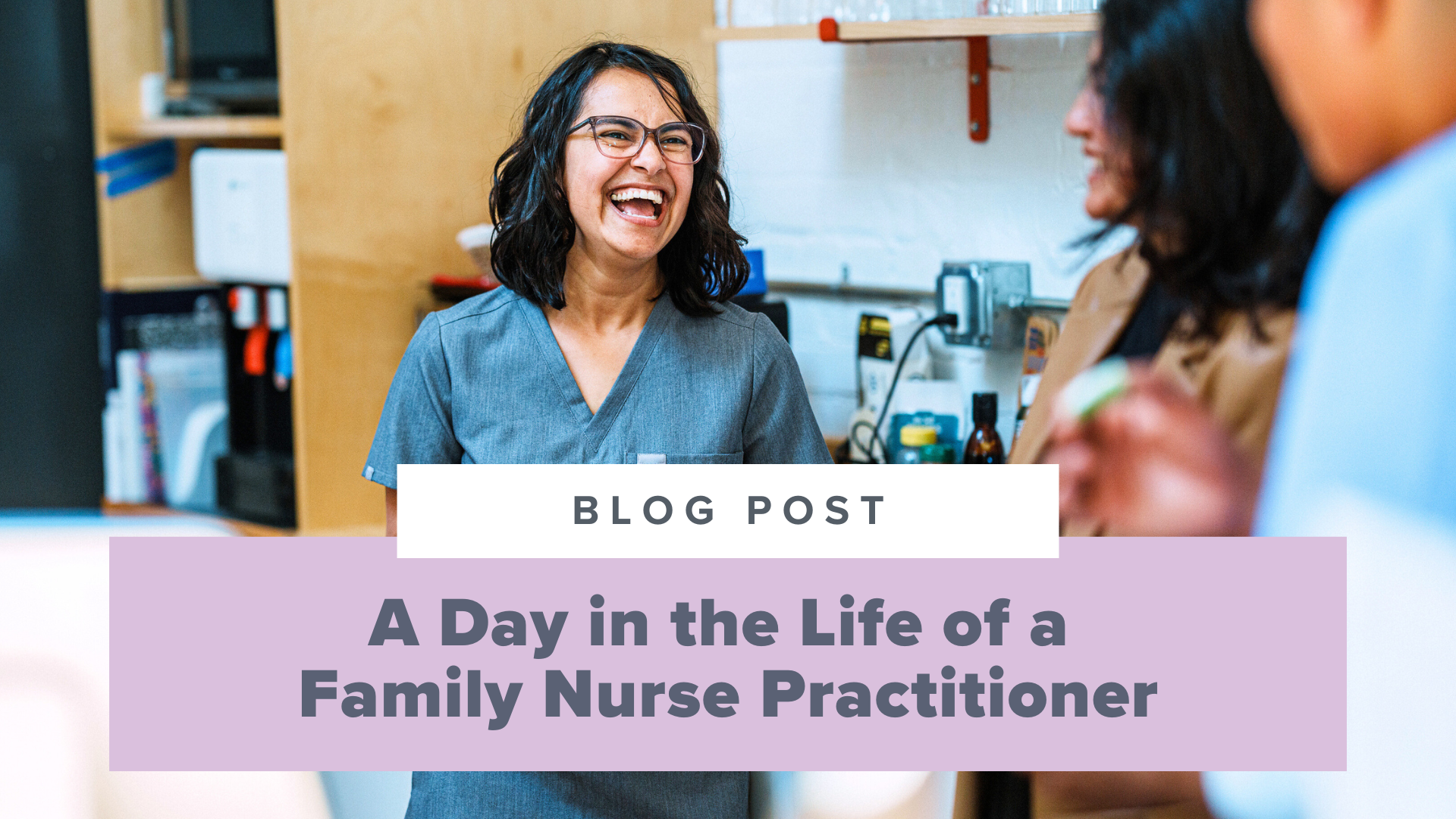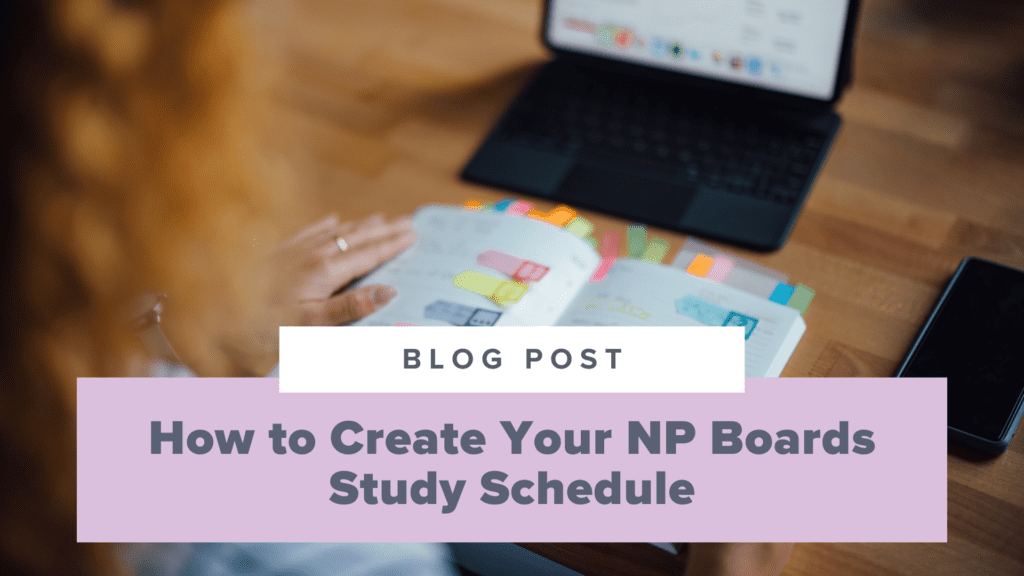A Day in the Life of a Primary Care Family Nurse Practitioner
- by
- Feb 05, 2025
- Articles

I’ve been a family nurse practitioner (FNP) for almost 10 years. In that time, I’ve worked in family medicine, long-term care, and (currently) pediatric primary care. The FNP specialization is so versatile and I love all of the opportunities it provides!
In this post, I’ll walk you through what it’s like to work in a family practice setting. What kind of patients did I care for? What were the most common conditions I managed? What’s it like having to juggle charting and administrative tasks with actually caring for patients?
I’m a little biased (okay…maybe a lot biased) to say that the FNP is one of the best nurse practitioner specializations, so let me share my story to help you decide if working in family medicine is the right place for you!
What is an FNP?
Family nurse practitioners care for individuals across the lifespan, meaning from birth through older adulthood, including end of life. FNP is the most common nurse practitioner specialization, but there are lots of other NP specialties like adult-gerontology acute care (AGAC-NP), women’s health (WHNP), and pediatrics (PNP) just to name a few!
FNP Responsibilities
FNPs focus on the outpatient (outside of the hospital) care of individuals. However, the opportunities for FNPs don’t end in a family practice clinic. You can work in other types of outpatient settings, like in a long-term facility, conduct home health visits, and even work in other specialty clinics like cardiology or dermatology. There are so many opportunities!
FNPs can conduct advanced physical assessments, order diagnostic tests, diagnose conditions, and prescribe medications and other treatments. They also educate patients to care for themselves and help supervise staff and other administrative duties.
How to Become an FNP
To become a Family Nurse Practitioner, the minimal degree requirement is a Master of Science in Nursing. If you already have a master’s degree, you might qualify to earn your FNP specialization through a post-master’s certificate program.
After you complete your FNP program, you will sit for your board certification exam, where you will then become a board-certified Family Nurse Practitioner once you pass!
What’s a typical day in a primary care family medicine clinic?
So as an FNP in a primary care office, what did I do? Let me walk you through a typical day at the office!
Getting Ready
I would start my day at 8 a.m. I would try to arrive a little earlier than that to give myself time to review any new messages and results that returned overnight. I would also review my schedule for the day to see what patients I was going to see.
This preparation really helped me get organized. For example, if I saw a patient was coming in that day for a follow-up visit, I made sure to look over their last visit note and make sure any labs or diagnostic studies were completed and reviewed prior to seeing them.
That preparation made the appointment run more efficiently, plus it saves time during the actual visit by not having to recap everything from the last visit. Also, this time allowed me to review the reasons for the visits. Besides follow-up, were patients coming in to be seen for a new concern?
Working in family practice was my first job after graduating and passing my NP boards. I was constantly looking up guidelines, medication doses, and indications for different tests. While it took me a few years to really have the confidence to trust my knowledge and instincts as an NP, that prep time allowed me to walk into the patient encounter with the confidence to better care for my patients and gain their trust.
Seeing My Patients
My first patient would be scheduled for 8 a.m. They would be checked in by the front office staff and brought back towards the exam room by the medical assistant (MA) or nurse (LPN or RN). The MA or nurse would then get the patient’s vital signs, review medications, and confirm the reason for the visit. After that, it was my turn!
I would typically see about 16-20 patients each day. My day would be filled with follow-up visits for chronic conditions like hypertension, hyperlipidemia, diabetes, and COPD, just to name a few. I would adjust medications, educate patients to better care for themselves, and oversee referrals to specialists. I would also care for patients experiencing acute conditions, like upper respiratory infections, abdominal pain, or even minor injuries.
With the variety of conditions I would manage, I would also see patients of all ages. I cared for newborns recently discharged to home from the hospital all the way up to older adults. Family medicine is definitely not boring!
Ending the Day
Throughout the day I would try to keep up on paperwork, lab results, medication refills, and other patient communications that came through. I relied on the staff to help filter, organize, and prioritize those tasks. I absolutely trusted the staff that I worked with and their help was indispensable.
My appointments would last about 20 minutes, and my last appointment was scheduled for 4:20 p.m. By the time that that last visit was over, I would have time at the end of my day to wrap up any unfinished business. I used my time at the end of the day to complete any necessary charting (although I got very efficient about charting during the visits with patients), reply to any outstanding messages, and check in with the staff about any needs or questions they had. Most days, I would be out the door by 5 p.m. and excited to spend time with my family.
Final Thoughts
While I no longer work there, I am so grateful for my time as an FNP working in a family medicine clinic. It truly shaped me into the NP that I am today, and I am proud of the impact I had on the patients I cared for. If you’re undecided about what your long-term NP career goals are, the flexibility that comes with being an FNP might be a great option for you!
💜 Becoming an FNP takes time and hard work, but it’s so worth it in the end. If you’d like to become an FNP one day, check out our FNP study resources at SMNP Reviews, including live instruction, self-paced courses, and more!
Not sure about FNP as your specialty? Explore these other “day in the life” posts from real-deal NPs:
Search the Blog
Prepping for Primary Care NP Boards?
Join our Primary Care Live Study Group or check out the Self-Paced Courses & Qbank options!
Learn MoreExplore Specialty NP Qbanks & Mock Exams
Practice with board-style questions for your AGACNP, PMHNP, ENP, WHNP, or PNP exams.
Get StartedJoin our Facebook Group!
Get FREE support and encouragement from thousands of FNP/AGPCNP students and our NP support team.
Join the CommunitySign Up for Free Live Classes
Join us for FREE monthly live study sessions covering topics such as antibiotics, diabetes, musculoskeletal conditions, depression & anxiety, and more!
Grab a Spot


